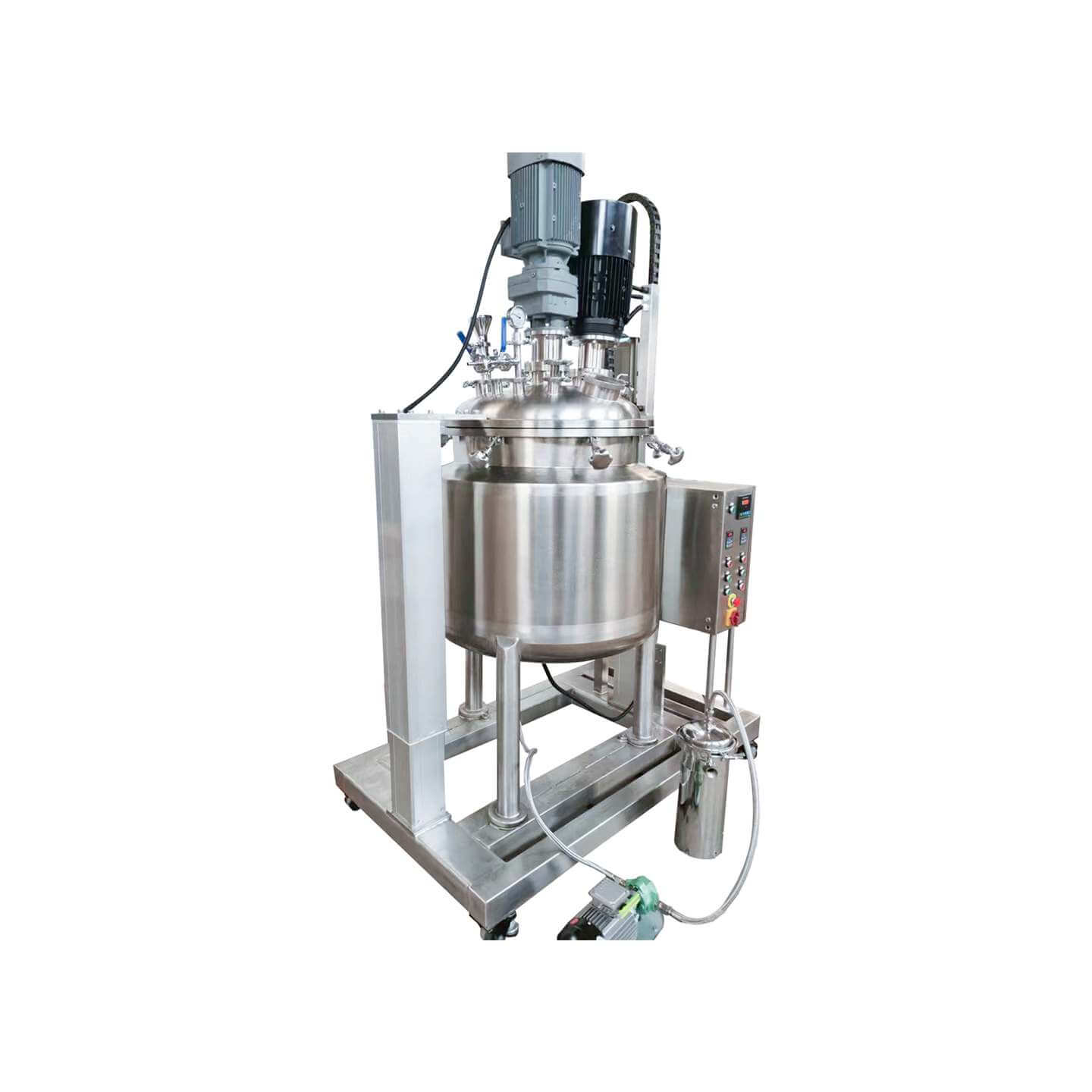

Laboratory Reactor
Laboratory reactor: used in the chemical industry, pesticide, paint, and other fields
Material
glass, stainless steel (316, 304), carbon steel, others
Capacity (L)
10-10000+
Mixing system
anchor, paddle, frame and others
Heating system
electric heating, oil heating and others
The laboratory reactor is small in size, beautiful in appearance, light, and fast in installation. It is composed of a pot body, pot cover, stirrer, jacket, support and transmission device, shaft sealing device, etc. The type of stirring device, rotation speed, sealing structure, heating method, etc. are produced.
Request a quoteLaboratory reactors are widely used in petroleum, chemical, rubber, pesticides, dyes, medicine, food, and other fields, and are used to complete the pressure vessels of vulcanization, nitration, hydrogenation, carbonization, polymerization, condensation, and other processes. Laboratory reactors are generally made of carbon steel, stainless steel, zirconium-based, nickel-based, alloys, and other composite materials.
The wide understanding of laboratory reactor is a container with physical or chemical reactions, which provides heating, evaporation, cooling, and low-speed mixing functions required by the process through the structural design and parameter configuration of the container. After the sealing surface is damaged, it needs to be reworked and repaired to obtain good sealing performance. When removing the lid, lift the underside of the lid slowly to prevent the sealing surfaces between the lid and lid from colliding with each other. When sealing with gaskets (tetrafluoro, aluminum, copper, asbestos, etc.), tighten the main nut to achieve a good sealing effect.

Installation and debugging of laboratory reactor
(1) Laboratory reactors should be installed in high-pressure workshops that meet explosion-proof requirements. When installing multiple laboratory reactors, they should be placed separately, and there should be a safety explosion-proof wall between them. Each workshop should be equipped with Accesses and exits to the outdoors, if explosive media are present, ensure that the equipment is well-ventilated.
(2) Unpack the laboratory reactor to check whether the equipment is damaged, install the equipment according to the structure diagram according to the equipment model, and confirm the equipment parts according to the packing list. If the heating method is to heat the heat transfer oil electrically, add the heat transfer oil of this type according to the operating temperature (the heat transfer oil must not allow moisture), open the oil filling port of the jacket sleeve when adding, and open the top oil level inlet of the jacket.
(3) The valve, pressure gauge, and safety valve of the laboratory reactor can be installed by tightening the positive and negative nuts to achieve the sealing effect. The arc-shaped sealing surfaces on both sides of the connection cannot be rotated relative to each other. All screw joints should be painted during assembly. Graphite is compatible with lubricants or oils to avoid biting. Valve use: needle valve line sealing, just turn the valve needle lightly to improve the sealing performance, and excessive force can prevent the sealing surface from being damaged.
(4) After installing the laboratory reactor equipment, charge a certain amount of nitrogen for 30 minutes to check for leaks. If a leak is found, use soap foam to find the leak point of the pipe and nozzle, release and tighten the gas, and pass the nitrogen compression test again to ensure that there is no leakage and then work normally.
(5) During cooling, the cooling coil can be used for internal cooling. To prevent cracks in the cooling coil and the main body of the kettle due to excessive thermal stress, rapid cooling is prohibited. When working, if the internal temperature exceeds 100°C, the water bucket between the magnetic mixer and the auxiliary cover must pass cooling water to ensure that the water temperature is not lower than 35°C.
(6) Safety device: It is a positive hole-type metal blasting plate, which is stainless steel. It is tested in the factory and cannot be adjusted at will. In case of blasting, it needs to be replaced again. The replacement period is determined by the user according to the actual situation of the unit. For the replacement that exceeds the blasting pressure without blasting, it is best not to exceed 80% of the lower blasting pressure. When replacing, pay attention to the protrusion of the bursting plate upwards.
(7) After the reaction is completed, first cool down, then discharge the gas in the kettle to the outside through the pipeline, reduce the pressure in the kettle to normal pressure, and strictly prohibit pressure decomposition, loosen the main bolts and nuts symmetrically and separate them, and carefully remove the kettle lid (or lift the lid) on the stand, taking special care to protect the sealing surface during lid removal.
(8) Qingxian in the kettle: After each operation, the cleaning liquid must be removed (be careful not to be corroded by the main material when using the cleaning liquid), and the residues on the kettle and the sealing surface should be cleaned frequently and kept clean. Cleaning of hard substances or rough surfaces.




